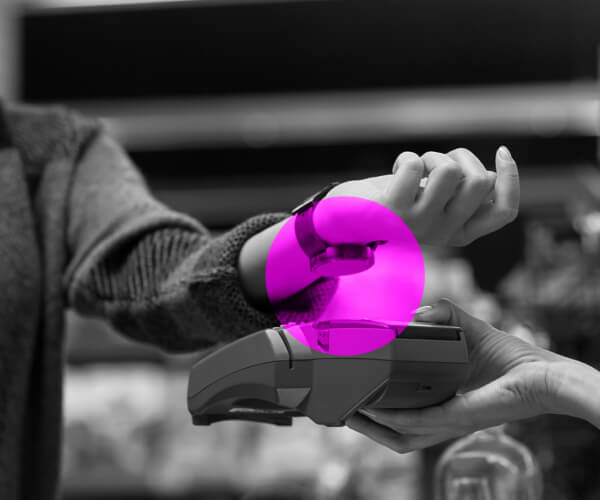Category Growth for the “Free From” Shopper
As a diagnosed coeliac (which means I can’t eat wheat, oats, barley, or rye), I’ve refined the art of shopping for my specific dietary requirements. I know the safe space in store, the brands available, and the colour cues and symbols across different retailers that denote what I can and can’t have. This laser focus on one aisle means I also have an immediate recognition of a new brand or product on shelf. Truly, free from shopping is a superpower and over the last 5 years my powers have been put to the test as I have seen huge changes in the style and scale of products available. With it, there is a shift happening. The look and feel of the brands are changing; they’re brighter, bolder, more modern, and becoming more aligned with mainstream food trends, finally bringing some delight to what can feel like a lot of deprivation. It’s an exciting time to be a “free from” shopper, and I’m not alone.
There are many reasons people actively shop across free from categories. Whether for diagnosed medical need (like me), personal choice, or driven by values and ethics, there is an ever-increasing number of shoppers choosing to actively seek and select products that fall under the banner of “free from”. It’s important to note that the definition of “free from” food can be subjective. We might consider low or no sugar foods to be “free from” , but generally in this space, shoppers are seeking foods that are either meat-free, driven largely by lifestyle choice (i.e., vegetarianism or veganism), or foods that are free from one of the 14 major allergens.
From a product and retail perspective, the typical main leading free from variants within this include wheat and gluten free, dairy or lactose free, and finally egg, nut, or soya free. This information is key to communicate on pack, especially for shoppers with allergies or medical conditions whereby product safety is vital [a matter of life or death for some]. Manufacturers and retailers therefore offering products in the free from space have a unique challenge when it comes to presenting items on shelf. They must balance enticing pack design that still communicates a great tasting product, with the importance of clear messaging and ingredient labelling to ensure appropriate choice and safe consumption. But while this might require more thinking and investment, this sector is not cracking under pressure.
In fact, the number of brands and products available in this space is continually growing, with more mainstream and independent retailers dedicating shelf space specifically to shoppers seeking these products. This is a smart move from retailers, because so rapid is the growth of this category that Yahoo Finance estimates the “free from” food sector to grow by $35.59 billion, yes that’s billion (!!!) dollars between 2022 and 2026. So, it’s a prime time for leading and free from brands to explore, understand, and innovate for the free from shopper.
 Thinking about the current “free from” market, what makes a great “free from” product? How do we know which brands are performing in this space and what does the retail landscape look like for this ever-growing group of shoppers? Well, to find out more, we sat down with Cressida Langlands, CEO of the UK’s official ‘Free From Food Awards’. With partnerships with leading brands and retailers like Tesco and Nairns, Cressida and the team are ahead of the game when it comes to the evolution in free from foods, brands, and what works when free from shopping in store. So, what’s the latest? Cressida shares more with us here:
Thinking about the current “free from” market, what makes a great “free from” product? How do we know which brands are performing in this space and what does the retail landscape look like for this ever-growing group of shoppers? Well, to find out more, we sat down with Cressida Langlands, CEO of the UK’s official ‘Free From Food Awards’. With partnerships with leading brands and retailers like Tesco and Nairns, Cressida and the team are ahead of the game when it comes to the evolution in free from foods, brands, and what works when free from shopping in store. So, what’s the latest? Cressida shares more with us here:
Q: So, we know ‘Free From’ is an ever-growing base of shoppers, but what are the main growth areas you’ve seen in the free from landscape and the products catering to this?
A: Well, the pandemic has put healthier diets in the spotlight, and this could benefit the free from market as around 30% of people report avoidance diets in the household now as part of a healthier lifestyle, but it’s the free from and allergic shopper that will remain at the heart of this category. This spotlight on health will challenge the health credentials of many free from products and may well be a catalyst for EPD and NPD.
Whilst of course vegan and plant-based food has seen tremendous growth in terms of range and NPD, many of these products are actually not suitable for the free from and allergic shopper either because of the way they are manufactured or due to other factors that deem these not entirely safe for consumption. For example, it’s reported that dairy remains the most avoided food with 26% of people saying someone in their household avoids it, but only 12% are doing so because of allergies or intolerance, so there are clearly some lifestyle drivers at play here and vegan products will not necessarily suit the latter group.
Despite the improvement across brands and retailers, shoppers still struggle to find products free from multiple allergens and it can be very time consuming while also managing multiple and complex allergies. There is definitely scope to do more!
Q: When it comes to shopping in store as a free from shopper, how important is packaging and messaging in free from shopping and which brands do you think are doing really well at capturing attention at shelf?
A: Clear and consistent communication of allergen messaging is critical if a free from or allergic shopper is to trust a brand. As the retailers have already gained the trust of consumers, a consistent application of free from messaging on their private own label ranges would be something shoppers welcome and embrace. Outside of bespoke free from ranges the application of any free from claims, which is understandably less consistent as these products ‘reason for being’ is not specifically free from.
NOMO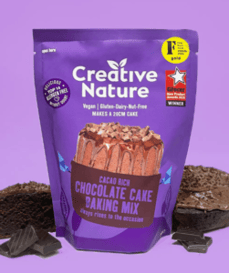
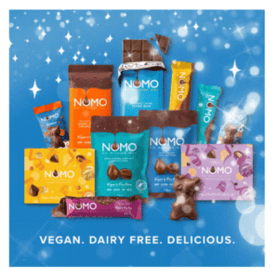 is a good example of a brand that has a high level of trust and recall of their free from credentials. Being nut safe is not commonplace so brands that are, tend to resonate with shoppers. Butterm!lk is also a good example of a brand that talks credibly to both the vegan AND free from shoppers.
is a good example of a brand that has a high level of trust and recall of their free from credentials. Being nut safe is not commonplace so brands that are, tend to resonate with shoppers. Butterm!lk is also a good example of a brand that talks credibly to both the vegan AND free from shoppers.
Another one to watch is Creative Nature. They use wonderfully colourful packaging to stand out, and then hit the shopper with unapologetic no top 14 allergen labelling. This is what we need in free from shopping, proudly owning and clearly communicating why these are still great products, while also being safe to consume. You can have both.
Q: And what about products that aren’t just designed for free from shoppers, for example, products that might be naturally free from allergens. How are retailers handling this?
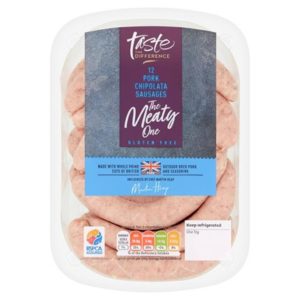 It’s important to note that free from isn’t only limited to the free from aisle or in adapted goods where products that are naturally free from allergens are communicated too. For example, most of the retailers are now gluten free across their premium sausages and burgers, see Sainsburys for example who apply a simple but effective ‘Gluten Free’ claim on the front of their packs – the free from shopper knows what to look for, yet non-free from shoppers are not put off by this. So things can feel more inclusive in other categories without alienating existing shoppers.
It’s important to note that free from isn’t only limited to the free from aisle or in adapted goods where products that are naturally free from allergens are communicated too. For example, most of the retailers are now gluten free across their premium sausages and burgers, see Sainsburys for example who apply a simple but effective ‘Gluten Free’ claim on the front of their packs – the free from shopper knows what to look for, yet non-free from shoppers are not put off by this. So things can feel more inclusive in other categories without alienating existing shoppers.
Q: On the whole, it feels like the options are growing and the retail environment is changing for free from shoppers. What do you think is driving this?
Yes, choice is widening, and as you mentioned this is also happening outside of the designated free from space in store which ensures more occasions can be truly inclusive. This can be attributed to a number of factors:
-
Free from space is limited – it’s therefore becoming harder for brands to secure space; hence products and brands are having to look outside of designated free from shelf sets.
-
The growth of veganism and plant-based diets – whilst these products are free from egg and milk-containing ingredients, they can often carry PAL (precautionary allergen labelling) for these allergens. Many contain gluten so whilst the free from and allergic shopper can potentially discover suitable products in this space, they need to interrogate labels. Vegan brands that can address both, demonstrating their knowledge of what the vegan or plant based free from shopper needs and give the necessary reassurances, have the opportunity to widen their market.
-
Improved knowledge around allergens – as more brands and retailers are recognising the opportunities in manufacturing free from, there is more appetite to invest in reformulation and testing which means more exciting times ahead for this sector!
Q: And when it comes to free from brands, there are offers from leading brands and manufacturers but also smaller, independent brands. What’s the difference? And do free from shoppers have a preference?
A: Whilst some shoppers will express a preference (based on their situation, be it financial or location), as a rule I don’t think shoppers have a preference because they recognise there is a time and occasion for both the big and small, hence they welcome both.
The bigger retail brands often provide shoppers with a greater choice, peppering and expanding upon own label ranges accessible to all and applying an approach that wouldn’t be possible within the constraints of an own label offer.
The smaller brands often bring something very different, possibly using techniques that can’t be upscaled, hence they are able to provide a genuine quality differential or even a new to market product. They can also provide elements of personalisation that just aren’t possible on a larger scale. So it’s an exciting time to be a free from shopper as the choice is continually growing.
Q: And when it comes to retailer own ranges, what makes a great free from range or store experience? Who is doing great and what makes it so special?
A: The big retailers are incredibly important. They brought free from to the masses and have, in many instances, been the catalysts for innovation in the sector. Shoppers place a high level of trust in the own label offer as the retailers have a reputational risk to manage and people recognise this.
Retailers are, on the whole, recognised for their extensive offer that covers the majority of occasion needs. In some instances, there is a greater reliance on brands, but this is the exception as opposed to the rule and they do of course all try to offer certain points of difference within their respective ranges.
In terms of what we need, a retailer now has to offer good availability and clear merchandising, which can in turn hugely enhance the store experience. The online experience is getting better too and is easily enhanced by straightforward search functions and dietary filters so shopping online for your free from groceries can be simpler. Brands just need to ensure they are listed in the right places.
Q: Finally, if you could change one thing about shopping for free from products in stores or online, what would you like to see done differently?
A: I would love to make information processing easier, so SEL (shelf edge labelling) that colour codes allergens would be great and maybe I am in dreamland here, but an app that could guide you to all the free from destinations in store would be amazing! Having to find the aisle itself can be the tricky part.
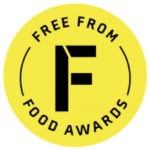 Cressida, thank you so much for your time talking with me. Let’s hope the free from shopping experience and the products available to us keep improving as it has been! It will be an interesting space to watch and we will keep looking to The Free From Food Awards to tell us what’s great and what’s next in free from shopping.
Cressida, thank you so much for your time talking with me. Let’s hope the free from shopping experience and the products available to us keep improving as it has been! It will be an interesting space to watch and we will keep looking to The Free From Food Awards to tell us what’s great and what’s next in free from shopping.
* The Free From Food Awards is the UK’s only award dedicated to free from food and drink and has been operating for 16 years. The awards are led by an expert judging panel who, outside of award cycles can also work with brands and retailers to offer information from a bespoke Development Insights Panel to further support and validate findings from primary research. In challenging economic times entering an award such as this can be a wise investment for brands and retailers with free from ranges. It provides opportunity to differentiate a product or brand and gain valuable feedback on your content and assets. The Main Awards cycle opens 3rd January 2023 and Christmas Awards cycle opens July 2023.
THE AUTHORS

Emma Kirk is VP of Market Development in Europe at Behaviorally and is based in the UK. Despite her British roots Emma loves international travel and work abroad and in the last 15 years has worked in Florida, France and New York City. With a background in Psychology and Sociology Emma loves exploring human behavior while also keeping an eye on socio-cultural trends and how they influence the consumer landscape. Fun fact, she is also a gluten-free food blogger, sharing her foodie finds with her thousands of Instagram followers!
Connect with her on Twitter @Research_Em1 or on LinkedIn.
 Cressida Langlands is the CEO of the Free From Food Awards, taking over the role a little over 3 years ago. She is an experienced administrator with a demonstrated history of working in the writing and editing industry with over 15+ years experience.
Cressida Langlands is the CEO of the Free From Food Awards, taking over the role a little over 3 years ago. She is an experienced administrator with a demonstrated history of working in the writing and editing industry with over 15+ years experience.
Connect with her on LinkedIn.
 Nicki Clowes is the Brand & Marketing Director at Free From Food Awards. She is a passionate and self-motivated brand marketer with a robust track record of developing engaging and relevant brand propositions and then translating these to activation strategies, always with the consumer at the heart.
Nicki Clowes is the Brand & Marketing Director at Free From Food Awards. She is a passionate and self-motivated brand marketer with a robust track record of developing engaging and relevant brand propositions and then translating these to activation strategies, always with the consumer at the heart.
Connect with her on LinkedIn.
